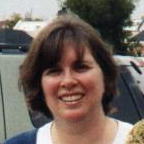 This book changed my life. And not only my life, but the lives of hundreds of other mothers and children too! I came across this edition ten years ago in my public library, when I was a 30-year-old attorney, pregnant with my first baby. Like many women of my generation - maybe most - I had no thoughts of becoming a stay-at-home mother, no thoughts of taking a baby into my bed, no thoughts of breastfeeding a child past a certain age. To the extent I thought about it at all, I surely believed that breastfeeding could not possibly space babies. I found this book almost totally by chance, while researching natural family planning (for medical but not religious reasons), and I picked it up after I became pregnant, mainly because I was curious and I just wanted to know the best way to care for a baby that would make sure it didn't cry too much!
This book changed my life. And not only my life, but the lives of hundreds of other mothers and children too! I came across this edition ten years ago in my public library, when I was a 30-year-old attorney, pregnant with my first baby. Like many women of my generation - maybe most - I had no thoughts of becoming a stay-at-home mother, no thoughts of taking a baby into my bed, no thoughts of breastfeeding a child past a certain age. To the extent I thought about it at all, I surely believed that breastfeeding could not possibly space babies. I found this book almost totally by chance, while researching natural family planning (for medical but not religious reasons), and I picked it up after I became pregnant, mainly because I was curious and I just wanted to know the best way to care for a baby that would make sure it didn't cry too much!
What I found was the introduction to a new way of life - a natural way, a loving way, a healthy way for myself and my baby and my family. I found a description of mothering and breastfeeding the way nature intended it, of the mother's body as a habitat for her baby, and of an ecological relationship between mother and child, relying on both and contributing to the health and happiness of each. I found clear and accurate scientific information about lactation and fertility, much of which I had never seen anywhere else. (And as a mature woman with several years of marriage behind me, I wondered WHY I had never heard these facts before!) But more than this, I found sage advice about how to enjoy my baby and find fulfillment in motherhood itself from a smart, experienced writer who seemed, even at a distance in time and space, to care about me personally, as a woman and a mother. Sure, I learned all about the kind of breastfeeding that spaces babies – and as a result I enjoyed lengthy periods of amenorrhea between each of my three children. But even more, I learned the joy of mothering through breastfeeding. I learned how much easier mothering is when we work with nature rather than against.
Since that first discovery, I have proudly acquired and read every edition of Sheila Kippley's book, Breastfeeding and Natural Child Spacing: How Ecological Breastfeeding Spaces Babies, as well as her other books and articles. I have recommended it to my friends and promoted it in mothers' groups and at conferences. I have referred to it time and again, as I made the natural mothering lifestyle my own. With each new edition, clearer, evidence-based standards (the Seven Standards of Ecological Breastfeeding) have evolved to assist mothers in maximizing the natural child spacing effect of breastfeeding. More importantly, with every revision of this book, ever more scientific and medical evidence has been available to support what Sheila Kippley had been saying all along!
Now even though the new editions of Breastfeeding and Natural Child Spacing: How Ecological Breastfeeding Spaces Babies have much to offer the modern mom, this classic 2nd edition, originally published by Harper and Row and rightly referred to as the "classic", retains pride of place in my own heart. It has a freshness of style and a remarkable relevance to present cultural conditions. I find myself nodding as I read, thinking how much has changed since Mrs. Kippley wrote this book, and yet how much more has stayed the same. The practices and principles advocated here are as current as ever.
In the 21st Century, the ecology of natural mothering has a hip and trendy new nickname: "eco-breastfeeding". Far from being a mere trend, however, the ecology itself – a human ecology – has never been more important to women, children, families, even to human society itself. Before there was "attachment parenting"…before the "organic revolution"…before anyone could measure his own "carbon footprint," there was Sheila Kippley, promoting ecological breastfeeding, the only truly natural form of baby care there is. May this newly-reissued Classic edition reach many mothers, change many lives and preserve the wisdom inherent in this natural lifestyle for many generations to come.
About the Author

Guest
We welcome guest contributors who graciously volunteer their writing for our readers. Please support our guest writers by visiting their sites, purchasing their work, and leaving comments to thank them for sharing their gifts here on CatholicMom.com. To inquire about serving as a guest contributor, contact editor@CatholicMom.com.


.png?width=1806&height=731&name=CatholicMom_hcfm_logo1_pos_871c_2728c%20(002).png)
Comments